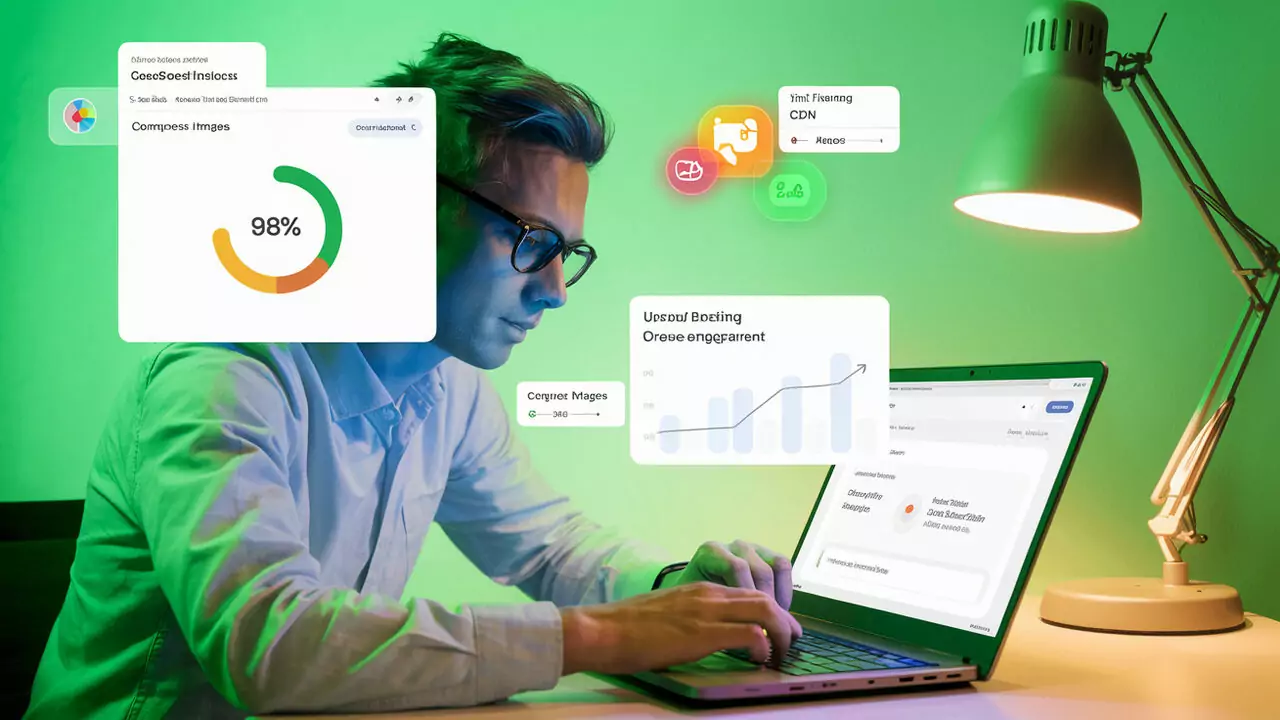
Improving Load Times: Optimize Page Speed for Better Engagement
A Deep Dive into Enhancing Your Landing Page Performance for Uninterrupted User Engagement
What You’ll Learn
- How to identify and troubleshoot common causes of slow page speeds
- Actionable techniques for optimizing images, code, and server responses
- Step-by-step guidance on leveraging caching and Content Delivery Networks (CDNs)
- Real-world examples and performance metrics to guide your efforts
Problem Definition: The Slow Loading Dilemma
Landing pages are often plagued by heavy graphics and unoptimized code. When images are not compressed and scripts are bloated, the performance suffers, leading to delays that deter engagement. The impact of server inefficiencies further compounds the problem, creating a bottleneck that directly affects user experience.
Understanding these underlying issues is the first step toward designing an effective solution for your contest landing pages.
For a complementary perspective on design improvements, check out our article on Design Best Practices: Create Visually Engaging Contest Landing Pages.
Impact Assessment: The Hidden Cost of Delay
Slow load times not only frustrate visitors but also result in high bounce rates, reduced trust, and lower conversion rates. The delay in loading content can lead to significant user drop-off, which in turn directly impacts contest participation and overall marketing outcomes.
Every second counts. A swift page response is crucial in keeping visitors engaged and enhancing their overall satisfaction. The hidden costs of delay might include the loss of potential affiliates and dedicated customers.
To ensure mobile users benefit from faster load times, explore our guide on Ensure your page speed is also optimized for mobile users.
Solution Framework: Fundamentals of Speed Optimization
Addressing slow load times involves a multi-faceted approach focused on both front-end and back-end improvements. Start by employing image compression techniques that reduce file sizes while preserving quality. Next, minify your CSS, HTML, and JavaScript to remove unnecessary code clutter that can bog down the browser.
Implementing server-side caching solutions and integrating a robust Content Delivery Network (CDN) are also critical. These measures ensure that your content is distributed efficiently across various servers, reducing latency and loading times for users across different geographies.
For insights into more advanced optimization, read our post on Learn how iterative testing can further refine your page optimization.
Implementation Guide: Step-by-Step Speed Tuning
Begin by conducting a thorough audit of your landing page speed using reputable online tools such as Google PageSpeed Insights or GTmetrix. These tools will help identify specific issues, such as unoptimized images or inefficient code, hampering the performance.
- Audit Your Page: Use performance analysis tools to pinpoint challenges.
- Optimize Media Files: Convert images to more efficient formats and compress files without sacrificing quality.
- Refactor Your Code: Minify CSS, HTML, and JavaScript, removing any redundant scripts.
- Implement Caching and CDN: Introduce caching mechanisms and a global CDN to alleviate server load.
- Monitor and Iterate: Regularly track improvements with performance metrics, and continue to fine-tune as needed.
Table Suggestion: Speed Optimization Checklist
A structured table can serve as an effective tool to track your progress. The table below compares initial performance metrics with post-optimization metrics, making it easier to visualize improvements.
| Metric | Before Optimization | After Optimization | Optimized Components |
|---|---|---|---|
| Load Time | 5.2 seconds | 2.1 seconds | Images, Code, Server Response |
| Page Size | 4.5 MB | 1.8 MB | Image Compression, Code Minification |
| Performance Score | 55/100 | 90/100 | Caching, CDN Integration |
This table can be adjusted with additional custom suggestions as you further tailor your optimization strategy.
Frequently Asked Questions
- How does page load speed affect conversion rates?
- Faster load times reduce bounce rates and enhance user engagement, leading to higher conversion rates. A seamless experience is key to converting visitors into participants.
- What are the most common causes of slow landing pages?
- Common issues include unoptimized images, bulky code, and inefficient server responses. Addressing these factors is critical to improving page performance.
- What is the role of CDNs in speeding up landing pages?
- CDNs distribute content across multiple servers worldwide, reducing latency for users by serving data from geographically closer servers.
- How can caching improve the user experience?
- Caching stores frequently accessed data on the user’s device or adjacent servers, thus reducing load times and delivering a smoother experience.
- What tools can I use to measure page speed performance?
- Tools such as Google PageSpeed Insights, GTmetrix, and Pingdom provide detailed analysis and actionable recommendations to boost page speed.
Recap
In summary, auditing your landing page performance, optimizing images and code, implementing caching and CDN solutions, and continuously monitoring progress are crucial steps to improve load times. Faster load speeds not only enhance user experience but also boost engagement and conversion rates.
Jump to: Problem Definition | Impact Assessment | Solution Framework | Implementation Guide | Optimization Checklist
Next Article section
If you found these insights on improving load times valuable, you are sure to appreciate our next piece that focuses on enhancing mobile experiences to capture an even broader audience. This upcoming article dives into mobile-specific strategies that build upon the speed optimizations discussed here, ensuring your visitors have an outstanding experience regardless of the device they use. Enhance your mobile experience to capture the broader audience.
Call to Action
Ready to put these strategies into action? Join our free ‘Fightback Traffic Systems‘ WhatsApp group where we dive into practical and underground affiliate marketing traffic strategies through in-depth webinars and community discussions. Take the next step in refining your digital presence and improving your landing page performance.
